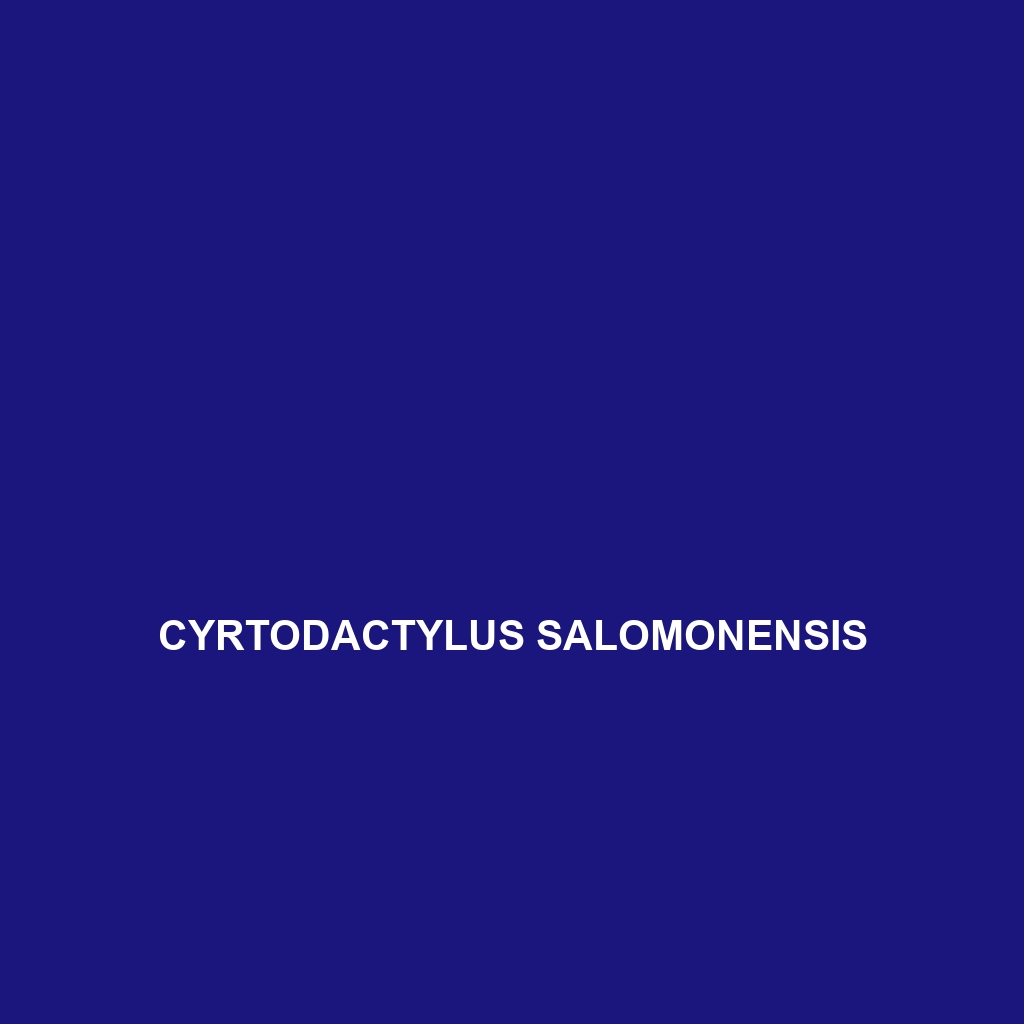Cyrtodactylus saiyok: A Species Overview
Common Name: Cyrtodactylus saiyok
Scientific Name: Cyrtodactylus saiyok
Habitat
Cyrtodactylus saiyok is primarily found in the limestone karst habitats of western Thailand. This species thrives in tropical and subtropical climates, often dwelling in rocky crevices and caves. The specific geographic range includes areas around the Sai Yok National Park, where the complex limestone formations provide ample shelter and hunting grounds.
Physical Characteristics
This species of gecko averages about 10 to 15 cm in length and exhibits a distinctive elongated body with a flattened head. The coloration typically involves shades of brown or gray, allowing it to blend seamlessly with its rocky environment. Cyrtodactylus saiyok features a unique pattern of spots and bands, and its toe pads are well-developed for climbing, providing excellent grip on uneven surfaces.
Behavior
Cyrtodactylus saiyok is primarily nocturnal, becoming active at night to hunt and explore its environment. This species is known for its agile movements and ability to escape predators quickly. During the day, it seeks refuge in cool, shaded areas to avoid the heat. Typical behaviors include basking on rocks during the early evening and exhibiting territorial displays during mating season.
Diet
The diet of Cyrtodactylus saiyok primarily consists of insects and small arthropods. Common food sources include crickets, beetles, and moths. This species employs a sit-and-wait strategy to capture prey, utilizing its keen sense of sight to spot potential meals from a distance. Its feeding habits are essential for maintaining the insect population in its habitat.
Reproduction
Cyrtodactylus saiyok breeds during the warmer months, typically from March to October. The female lays clutches of 1 to 2 eggs, which are often buried in sandy substrates. The eggs incubate for about two months before hatching. The hatchlings are fully formed and independent, mimicking adult coloration for camouflage against predation.
Conservation Status
As of now, Cyrtodactylus saiyok is categorized as vulnerable due to habitat loss and degradation caused by human activities such as agriculture and urban development. Conservation efforts are necessary to preserve its natural habitats and ensure the survival of this unique species.
Interesting Facts
One fascinating aspect of Cyrtodactylus saiyok is its ability to change color slightly for camouflage depending on its surroundings. Additionally, this species is less studied compared to other geckos, making it an interesting subject for herpetologists and wildlife enthusiasts alike.
Role in Ecosystem
Cyrtodactylus saiyok plays an important role in its ecosystem as both a predator and prey. By controlling insect populations, it helps maintain the balance of its habitat. Furthermore, it serves as a food source for larger predators, such as birds and snakes, demonstrating its integral position within the local food web.
